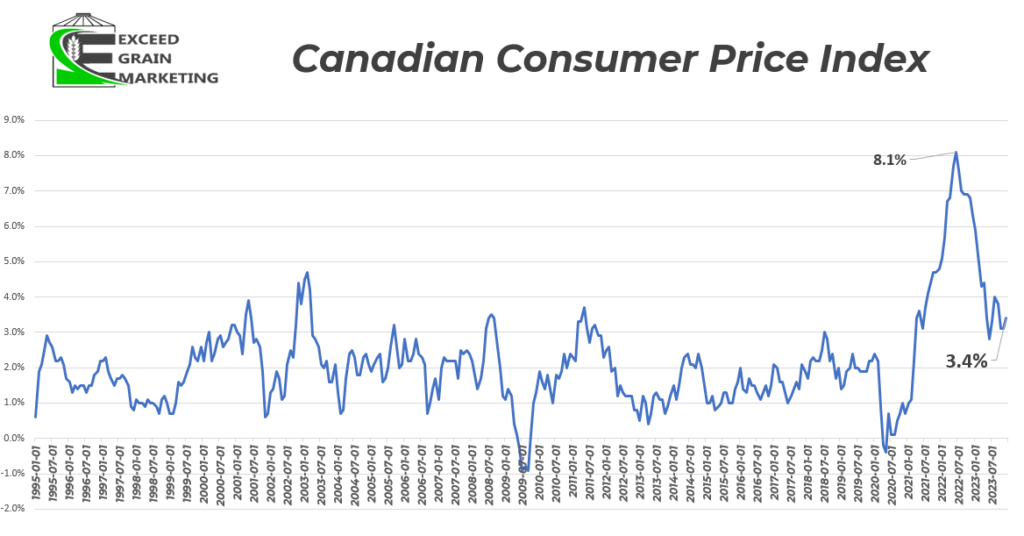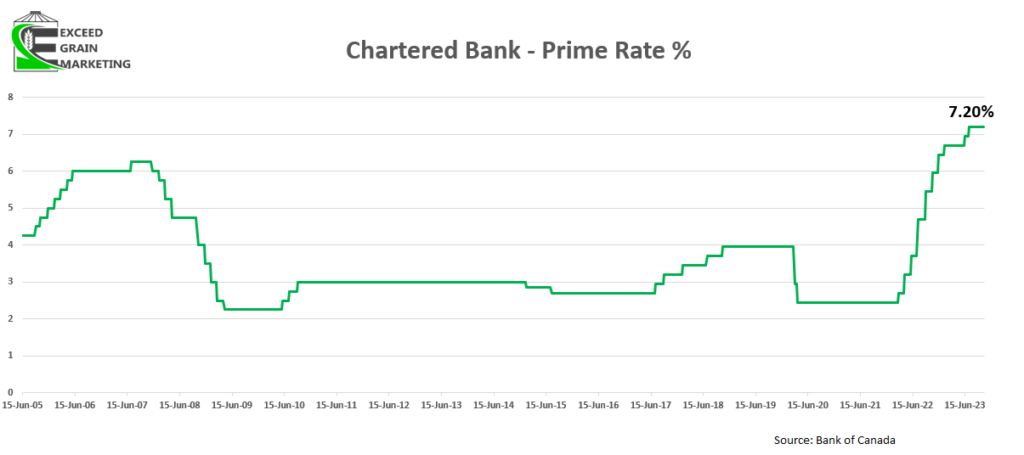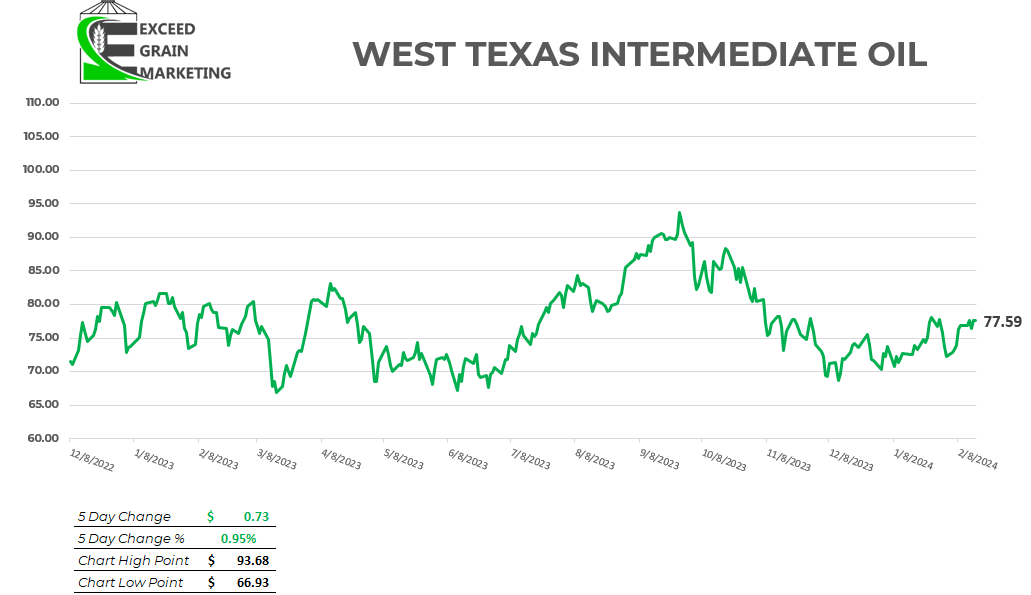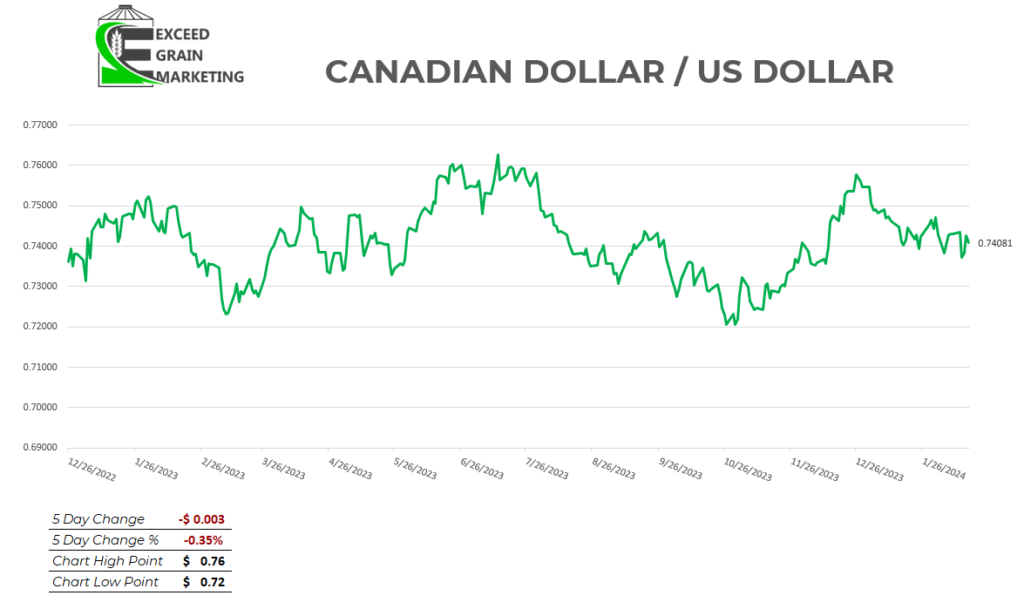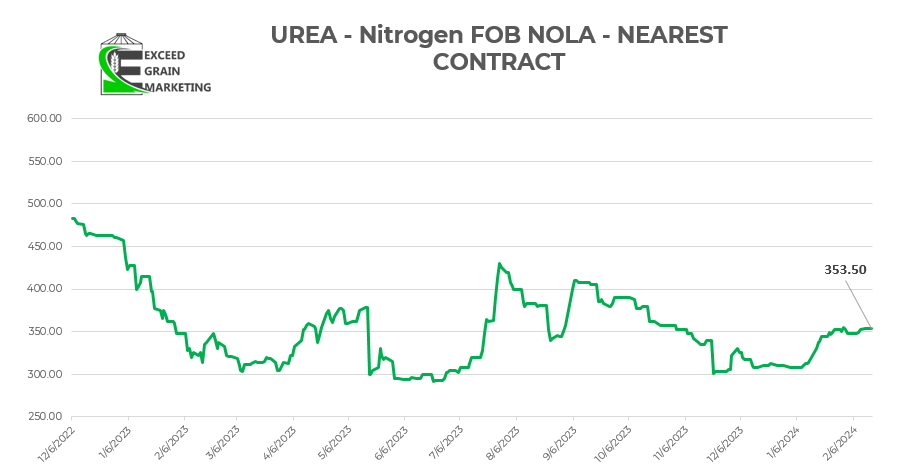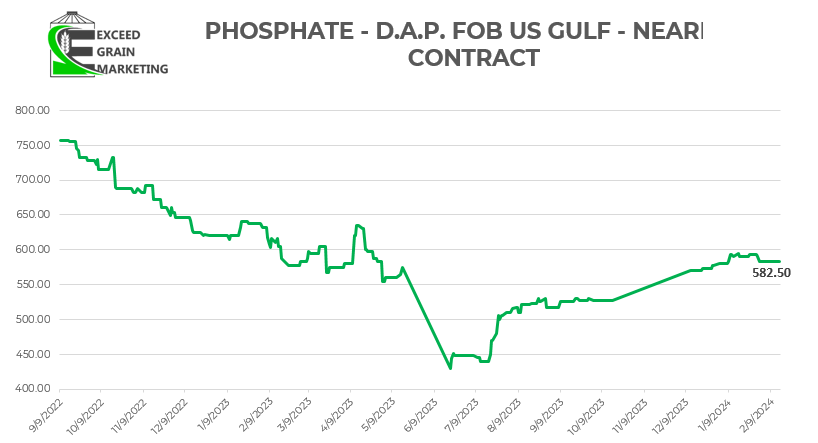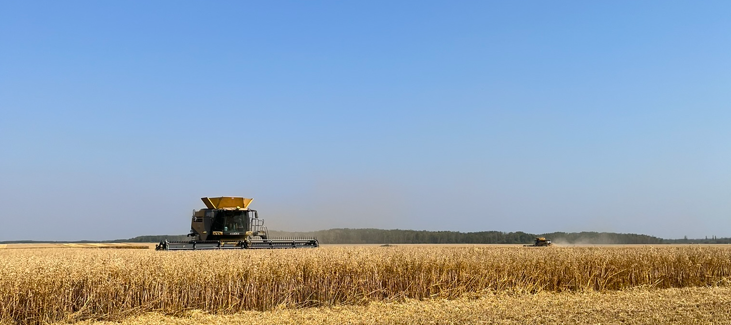Exceed Grain Marketing’s Client Exclusive report is dedicated to covering the ongoing trends and significant highlights within the local market, while simultaneously offering a perspective on the global landscape. This approach ensures a comprehensive understanding of the factors influencing the market at both local and international levels. Our aim is to deliver current, up-to-date information specifically tailored to the crops impacting your operation. Work with your Exceed Grain Marketing advisor to devise specific strategies that may work for your crop.
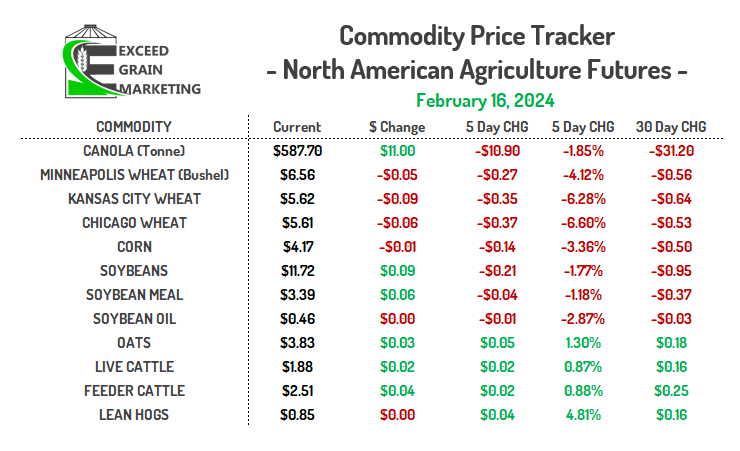
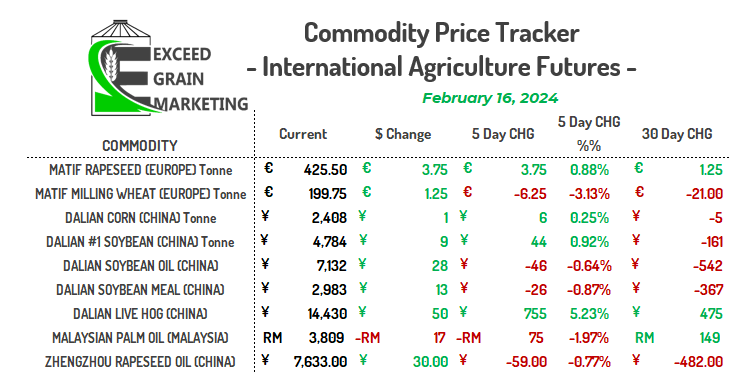
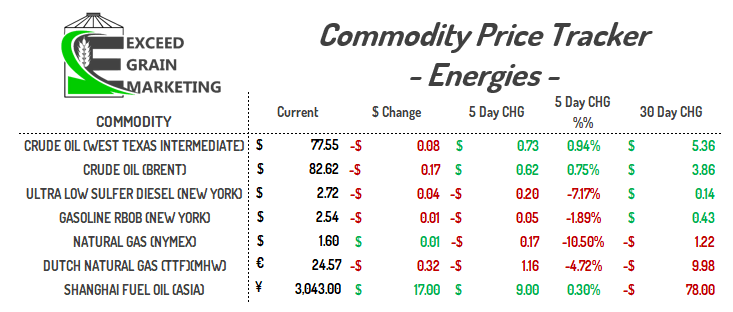
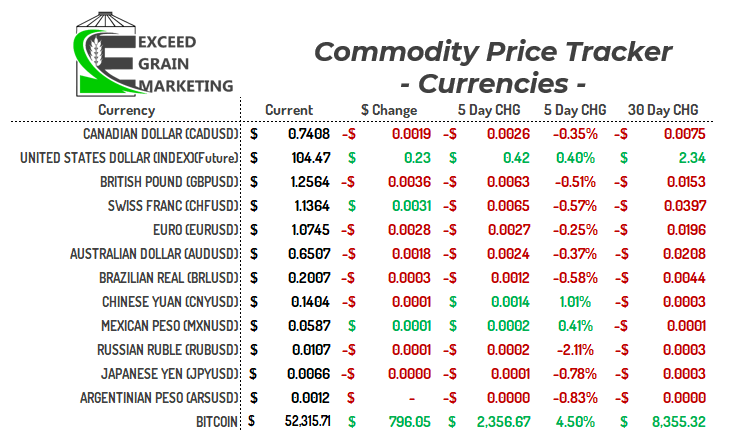
MARKET HIGHLIGHTS
- Canola had a green trading day making some recovery in the market. Up $11 at the close of the trade.
- Canola officially posting a value cheaper than Australian canola at select port export locations. As of Thursday, February 15th. Canola sitting at Vancouver was reported about $20 per tonne cheaper than canola sitting at an Australian port. Canadian canola futures also have traded below the European MATIF futures values.
- Canola has faced a tough struggle here in recent months and has worked its way lower into a competitive export value. Something to keep in mind as we are just over the halfway point of the grain marketing year (Week 29)
- Canola exports picked up ground once again this week with 138,800 tonnes in exports. Not a rockstar of a week but they are the kind of weeks we need to maintain pace. If we are looking to hit that 7 mmt export figure that lots of private analysts still are looking to achieve, we need to grab weekly sales closer to that 160,000 tonne mark.
- We need a strong back half of the marketing year to make up for the downfall in the front half of the trade. Canadian canola for importers is the cheapest it has been relative to its counterparts in a significant amount of time. Keep this in mind going forwards that Canada is no longer the most expensive source of the crop globally anymore and has lost its premium it generally has carried to some of its counterparts.
- Markets have lacked much for direction this week. We had a few small reports come into play and mostly sent markets lower on lack of any reasoning to be bullish.
- The Big Report being watched for the week was Thursdays Ag Outlook Forum acreage figures. The Ag Outlook Forum placed initial acreage at the following:
- Corn acres 91 million vs 91.8 pre report estimate
- Soybean acres 87.5 million acres vs 86.5 million pre report estimate
- Wheat acres at 47 million vs 47.5 pre report
- Chinese market participants will be back on Monday. Most of Chinese business was shut down this week as the nation celebrated the Lunar New Year.
- Big items markets are looking for in the coming weeks are renewed interest in North American grains, looking at South American crop progress and overall health of our global importers. Still to early to look at North American planting conditions but there will be some Field activity end of March for the Northern United States and into Mid April for earlier areas.
- USDA WASDE February 8th Report Highlights
- USDA’s Estimate at the Brazilian crop came in at 156.0 mmt, down from 157 mmt last month. The problem the market found with this number is that the market wanted to see more of a 153 mmt figure. Overall the report was seen as generally bearish.
- Global Corn Ending Stocks cut to 322.1 mmt down from 325.2 mmt in last months WASDE
- Global Soybean Ending Stocks bumped higher to 116 mmt from 114.6 mmt in the last WASDE
- Global Wheat Ending Stocks adjusted down very slightly by about half million tonnes and comes in at 259.4 mmt
- US ending stocks all higher for their crops
- The USDA kept Canadian canola exports at a 7.6 mmt export figure. We are tracking below 6 mmt on actual exports right now. There is a wide discrepancy in export figures here but it should be noted where other agencies stand.
- CONAB report out Thursday February 8th
- Cut soybean production to 149.4 mmt down from 155.3 mmt in the January report. Brazil also lowered its soy exports for the year to 94.2 mmt from 98.5 in the January report.
- Corn production also cut 7 mmt to 201 mmt total production
- Stats Canada canola December 31st stocks came in at 12.85 mmt vs expectations in the 13.0 mmt area. Higher for the time of year last year and the year prior, but the 4th smallest in a decade overall. Not exactly abundant as the market makes it out to be. The problem will be how accurate these numbers are first off and how our usage is through the end of the year. If exports continue to lag, then the figure will be of less significance. Something to keep an eye upon
- Interesting to note that some crops came in at the tightest in a long time. Oats were a crop that stood out as well. Aside from December of 2021, oat stocks came in at the tightest in a decade.
- Peas, Durum, Lentils all worth taking a look at as well. Big question remains demand. Durum needs to get more tender business which it has been loosing out upon. Need to pick up export pace for most crops
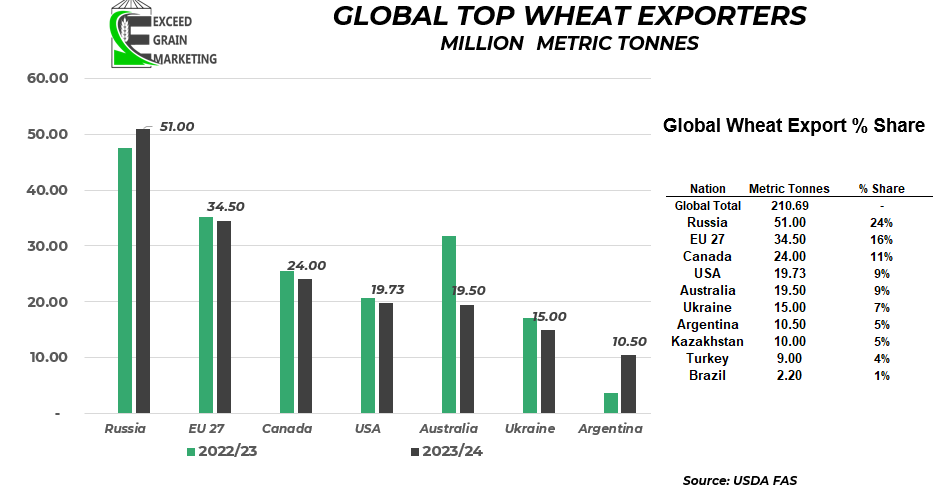
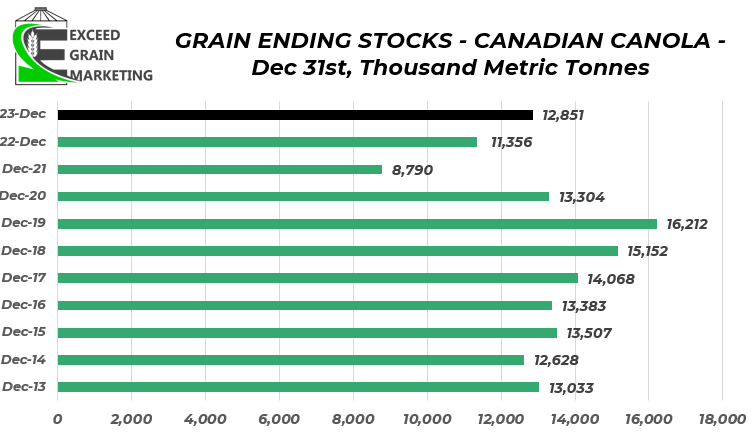
WESTERN CANADIAN CROP NOTES
Canola:
- Canola has been getting hammered and touching levels last seen in 2020 and has run itself into a bearish trade. Canola has been at the mercy of fund selling and has having a challenging time working out any sort of a gain.
- Canola exports last week were enough to maintain current pace. They were not enough to be considered a “push ahead” week. Importers would be wise to jump on these pricing opportunities to pick up crop at discounts. Crushers would also be wise to incent canola into their system as there is still coverage needed for the coming months and into the summer.
- Crush is running at a very impressive pace, could hit a 11mmt record. Markets need to see exports pick up to get any sort of strength into the domestic trade (Basis).
- Canola will trade at the mercy of foreign veg oils for the time being (Palm, Soy, Rapa). Canola has been taking it a bit harder than its competitors although recently.
- South American harvest and export demand will dominate the trade headlines, Western Canadian weather will pick up more of the news come closer to spring.
- Crusher bids still dominate and hold close to the $13.00 mark today in some instances, depending on region and Basis levels.
- For a more in depth analysis on Canola Specifically, check out our Canola Fundamental report by clicking here: Canadian Canola Market Fundamentals – Q1 2024
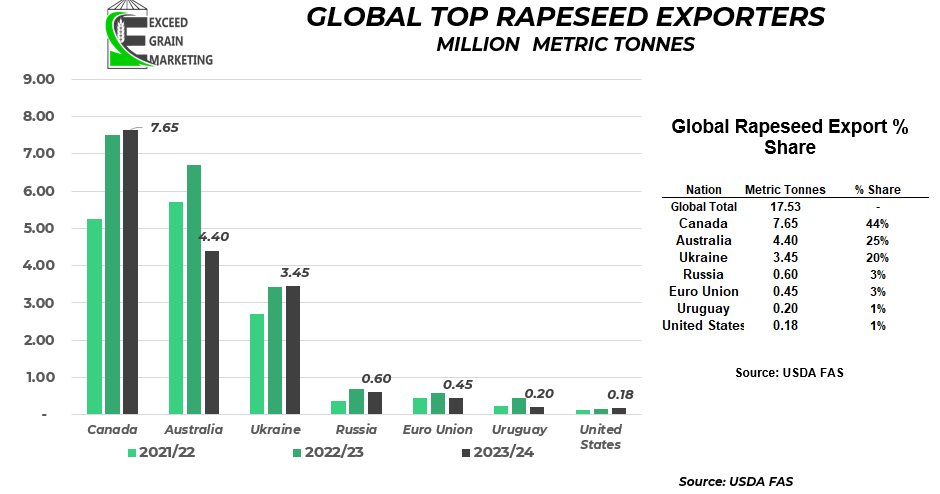
Spring Wheat:
- Global wheat values diminished here recently as Russian and Ukrainian origin grain pushing below that $220 per tonne level on some recent tenders.
- Wheat domestically in Canada has been unable to hold its premium here in the past 10 days and has dipped below the $9.00 benchmark we were trading across the prairies. Exporters having a bit more of a challenging time getting Canadian wheat to price globally, so the recent drop in domestic bids will likely help this
- Canadian Wheat exports and domestic usage considered very strong. At the current pace of exports and domestic usage, rationing will be needed. This does not always mean price correlates accordingly
- Wheat exports expected to easily surpass last years levels at current pace and are on track for an 8% increase year over year. Likely not able to make that happen although as rationing will supersede this
- Canadian wheat of good quality. 97% graded as either a #1 or #2 HRSW
- 80% had falling number above 350 seconds
- Old Crop HRSW bids still posting $8.75 in select locations. $8.25 to $8.50 in weaker basis regions.
- Wheat trade right now is mostly demand based. We have a good idea on global supplies for the most part.
- Next thing market will be watching for is crop progress in the US and EU winter wheat crops and Spring Wheat planting conditions in Europe. This will be more relevant come April / May.
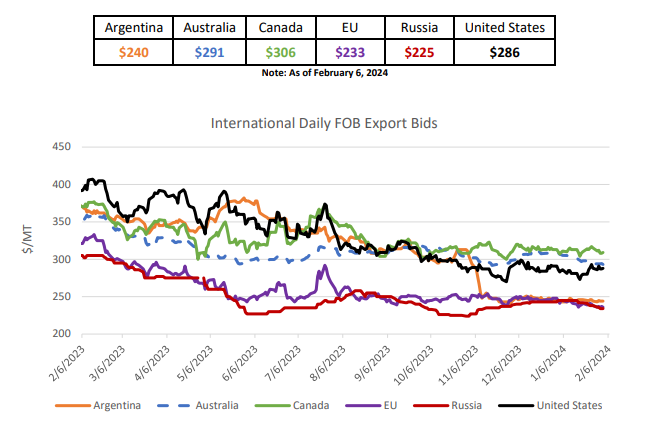
Special Crops
- Canadian peas will face stiffer competition going forwards into China as some Black Sea peas able to price into the region.
- Canadian red lentils also competing with a larger Australian crop. Indian lentil harvest taking place here in the coming weeks and crop is expected to be of a healthy size. Looks like higher availability for global export market
- India reduced Yellow Pea import tariffs from 50% down to 0% until March 31st, 2024. Most of the significant buying for these deliveries has tapered off over the past week as exporters need to get the peas into export position.
- Durum exports lagging 42% behind last years pace. Looks like Canadian durum has been missing out on some recent tenders into North Africa. Durum exports have somewhat disappointed traders as we missed some key export opportunities early on due to some better than expected Mediterranean crops.
- Red Lentil reduced import tariffs extended until March of 2025
- Yellow Peas buying interest falls from early January. Still some $11.50 to $12.00 bids available. New crop sitting at $10.00 +
- Green Peas $17.50
- Red lentils around $0.33 per bushel
- Canary Seed $0.39 FOB most locations western Canada. $0.41 delivered
- Flax Bids in the $15.50 to $16.00 range FOB
- Feed Barley drops. Sub $5.00 to start February out. Was $5.50 at start of January. Still competing heavily with US corn origination
- Feed Barley at the mercy of US corn crop prices and Currency. Corn prices softening in the US and the Canadian dollar picked up a few pennies since fall time. Corn imports still pencil out into Canadian feeders.
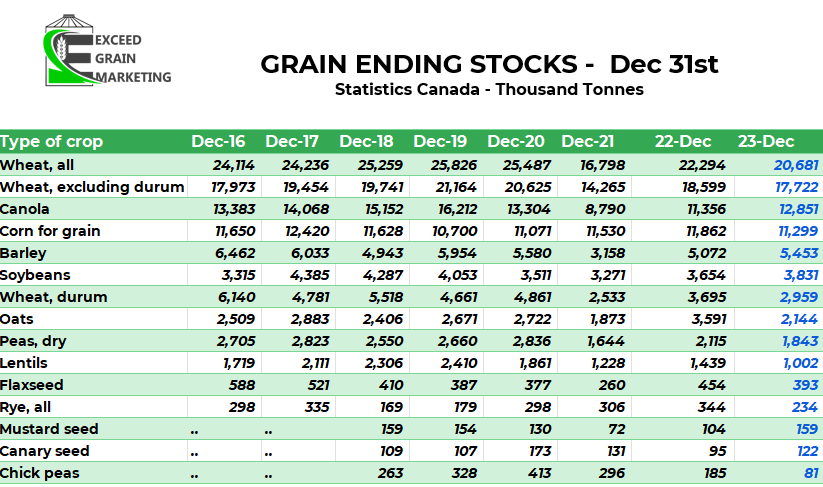
Latest Key Fundamental Report Highlights
- AUSTRALIAN ABARES (DECEMBER) Next report is March 5th, 2024
- Australia came out with its ABARES report on December 5th. The report was slightly bearish, especially for canola as they tacked on a few hundred thousand tonnes since their September report. 5.5 mmt is the figure they are going with as it appears the crop grew in size as they got into harvest.
- STATS CANADA ( DECEMBER)
- March 11th we will get Principal Field Cropping Areas
- Stats Canada report came in and was mostly as expected but higher than the prior report released pre harvest.
- Canola- 18.3 mmt vs 18.3 mmt pre report estimate
- Spring Wheat – 24.7 mmt vs 24.0 mmt pre report estimate
- Barley 8.9 mmt vs 8.6 mmt pre report
- Oats 2.6 mmt vs 2.6 mmt pre report
- Durum 4.0 mmt vs 4.1 mmt pre report
- Corn 15.1 mmt vs 15.0 mmt pre report
- Soybeans 6.98 mmt
- Lentils 1.7 mmt vs 1.7 mmt pre report
- Peas 2.6 mmt vs 2.6 pre report
- Flax 0.272 vs 0.290 pre report
- Most of the production numbers are higher than they were in the early days of harvest when ideas for the canola crop were floating around a high 17’s number. Same could be said for Durum and a few other select crops.



Currency – Energies – Fertilizer
- Bank of Canada Stays Put with current interest rates at the January interest rate meeting. Prime sits around 7.2% at major Canadian banks. Hinted that we could be higher for longer. Cuts will not be significant if they do come. The Bank of Canada has also recently hinted that one could face another rate hike but it is hesitant to do so given that Canadians are feeling the pinch of higher rates.
- Canadian CPI Still “Sticky” and sits at 3.4% as of the latest announcement.
- New CPI data out February 20th
- March 6th is the next Bank of Canada interest rate announcement
